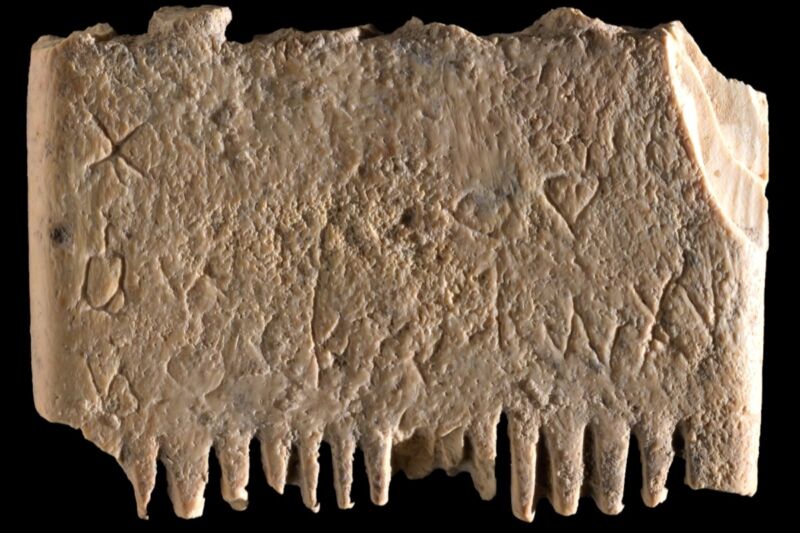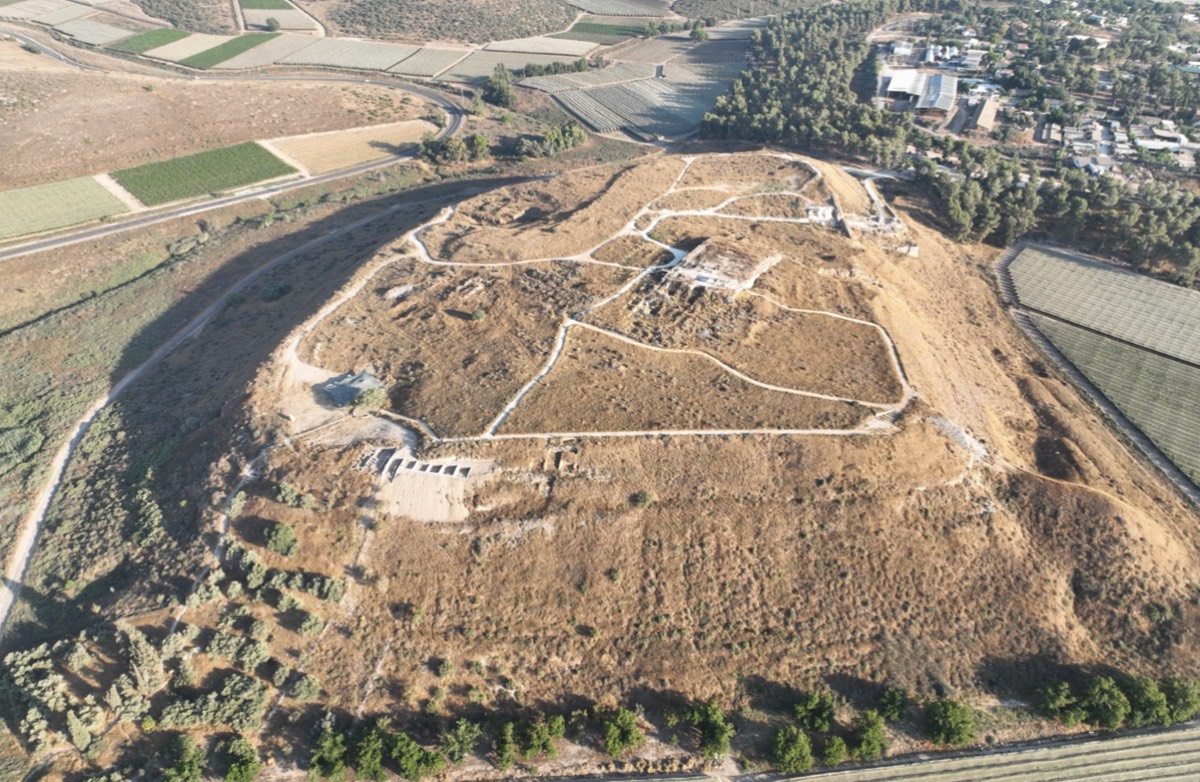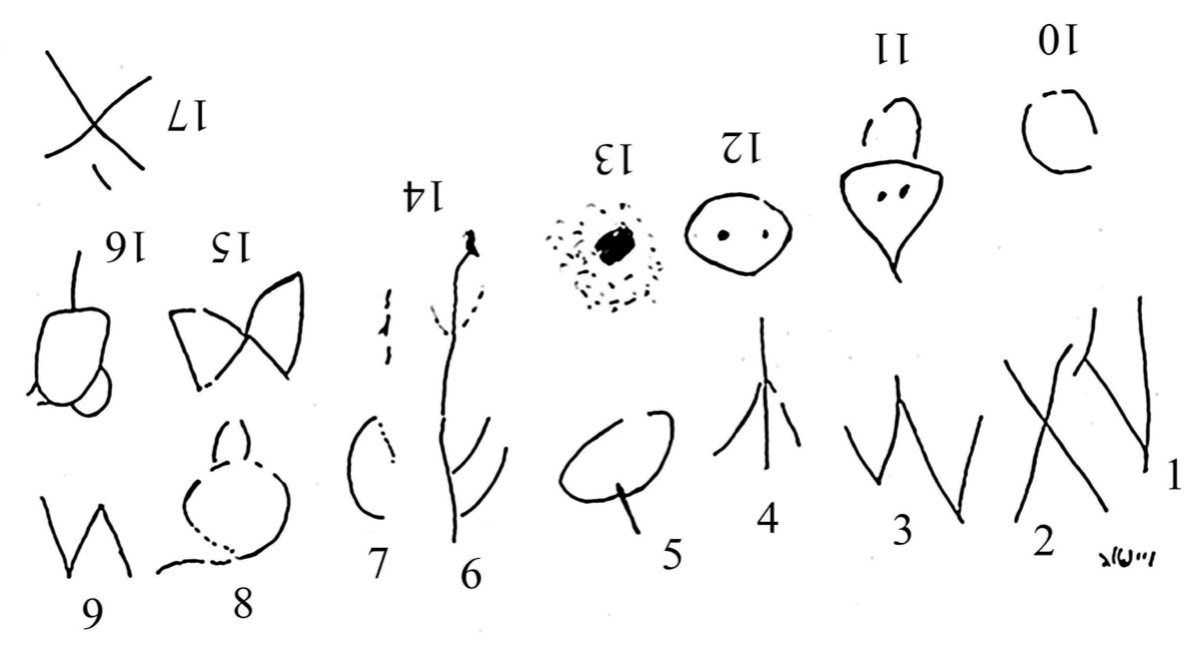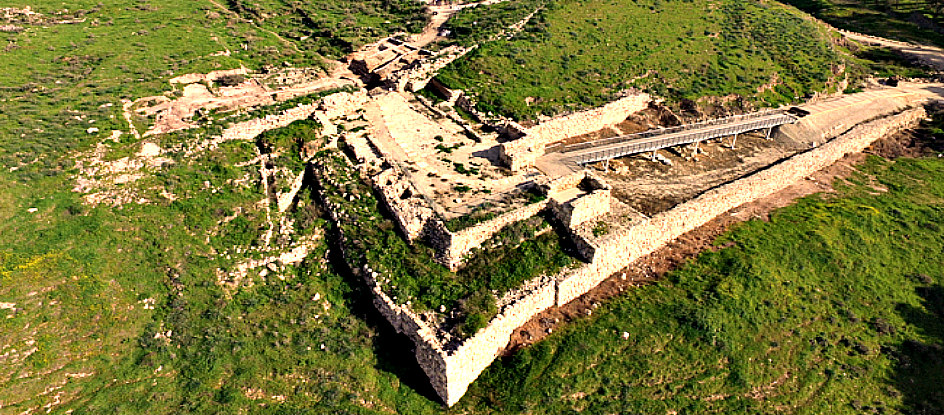
Several years ago, archaeologists unearthed a small ivory comb at Tel Lachsich in Israel, once a major Canaanite city-state in the second millennium BCE. But it wasn't until last December that someone realized the comb had an inscription using early pictograph symbols of the first alphabet. Once deciphered, the inscription turned out to be a spell for preventing an infestation of head lice, according to a new paper published in the Jerusalem Journal of Archaeology.
“This is the first sentence ever found in the Canaanite language in Israel," said co-author Yosef Garfinkel, an archaeologist with the Hebrew University of Jerusalem. "There are Canaanites in Ugarit in Syria, but they write in a different script, not the alphabet that is used till today. The Canaanite cities are mentioned in Egyptian documents, the Amarna letters that were written in Akkadian, and in the Hebrew Bible. The comb inscription is direct evidence for the use of the alphabet in daily activities some 3,700 years ago. This is a landmark in the history of the human ability to write.”
While early writing systems emerged in Mesopotamia and Egypt over 5,000 years ago, they used symbols rather than a bona fide alphabet, which appeared significantly later, around 1800 BCE. Accordingly to the authors, little is known about this first alphabet because so few inscriptions have survived that predate the 13th century BCE—just a few letters, maybe a word or two, usually lacking context. "Thus, it is very likely that most writing was carried out on perishable materials that have decayed over time," Garfinkel et al. wrote. Since the 1930s, the Lachsich site has yielded a dozen or so inscription fragments from between the 13th and 12th centuries BCE, suggesting the city-state and surrounding region played a leading role in the alphabet's early history.
Much of the current excavation fieldwork at the Lachsich site took place between 2013 to 2017, and the ivory comb was unearthed in summer 2016. Considered a "prestige object," per the authors, it was found in the highest central area of the site, near a Persian-period Solar Shrine, an Iron Age palace-fort, an Acropolis Temple from the Late Bronze Age, and a Middle Bronze palace.

The comb measures just 3.5 by 2.5 centimeters (roughly 1.38 by 1 inches), with teeth on both sides, although only the bases remain; the rest of the teeth were likely broken long ago. One side had thicker teeth, the better to untangle knots, while the other had 14 finer teeth, likely used to remove lice and their eggs from beards and hair. Further analysis showed noticeable erosion at the comb's center, which the authors believe was likely due to someone's fingers holding it there during use.
The authors also used X-ray fluorescence spectroscopy, Fourier-transform infrared spectroscopy, and digital microscopy to confirm that the comb is made of ivory from an elephant tusk, suggesting it was imported. The team sent a sample from the comb to the University of Oxford's radiometric laboratory, but the carbon was too poorly preserved to accurately date the sample.
The inscription consists of 17 letters (two damaged) that together form a complete seven-word sentence. The letters aren't well-aligned, per the authors, nor are they uniform in size; the letters become progressively smaller and lower in the first row, with letters running from right to left. When whoever engraved the comb reached the edge, they turned it 180 degrees and engraved the second row from left to right. The engraver actually ran out of room on the second row, so the final letter is engraved just below the last letter in that row. Still, said engraver had to be fairly skilled, given the small size of the lettering.

Translated, the inscription reads, "May this tusk root out the lice of the hair and the beard." It's the first discovery in the region where an artifact's inscription refers to the actual purpose of the object. This purpose was confirmed when the authors searched for evidence of head lice on the comb under a microscope, and found some remains on the second tooth, still in the nymph stage of development. (Apparently, the climate of Lachish is not conducive to the good preservation of head lice.)
"Early alphabetic inscriptions are generally very brief—just a handful of letters—and often consist of the name of a person or the name of an object,” Christopher Rollston, an expert in Semitic languages and literature at George Washington University, who was not involved in the study, told New Scientist, calling it a "brilliant" decipherment. “Throughout human history, lice have been a problem. We can only hope that this inscribed comb was useful in doing that which it says it was supposed to do: Root out some of these pesky insects.”
DOI: Jerusalem Journal of Archaeology, 2022. 10.52486/01.00002.4 (About DOIs).



3175x175(CURRENT).thumb.jpg.b05acc060982b36f5891ba728e6d953c.jpg)

Recommended Comments
There are no comments to display.
Join the conversation
You can post now and register later. If you have an account, sign in now to post with your account.
Note: Your post will require moderator approval before it will be visible.